Balochistan drought: Famine remains expansive but hidden
Scores of villages hit by ‘animal holocaust’; mass exodus expected.
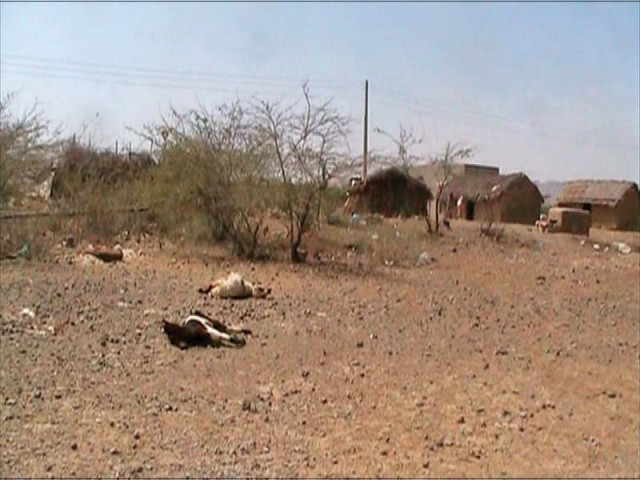
Carcasses of goats lie near a village hit by drought. PHOTO: EXPRESS
In the famine-hit village of Shah Dost Sasoli it is not uncommon to see piles of goat and sheep carcasses. Drought and starvation have left their mark on even the landscape surrounding this remote village in Lasbela district. Already the animal holocaust has brought great suffering upon the people. Yet the government is left unmoved by the scale of the disaster. The role of nonprofit organisations is next to minimal.
Large animal flocks have been decimated. At least 500 goats and sheep have died following a break out of rampant disease exacerbated by famine.
“The flock of the area is being gradually destroyed due to the drought,” said Sarwar Sasoli, newly elected councillor of the area. “Around 90 families of the village are dependent on livestock for livelihood, and the livestock are either dying or reeling from a deadly virus caused by the famine.”
“I lost more than 20 goats and sheep,” said Imam Din, whose family depends on livestock. “Barring a few light showers, there has been no rain for the past two years,” he said, citing the reason for the drought. Villagers say their animals are starving as their grazing areas have become dry due to the lack of rain. “Three to four goats die daily in the village,” said one villager.
“The famine began to have a severe impact when several animals fell sick two months ago,” said Ghulam Rasool, who once owned more than 80 goats and sheep. Now he is left with a few animals, most of whom are sick.
Ghulam has been living in Shah Dost Sasoli for the past four decades. But now his family has no option but to abandon the village. “We are planning to migrate to Hub city or Karachi for our survival,” he said. “All this time it was the animals that were starving. Next, it will be our turn.” The water level in Hub Dam has fallen drastically and people are facing an acute shortage of drinking water.
The fate of Shah Dost village is similar to scores of inaccessible villages in remote areas of Balochistan. Drought and death seem to stalk these villages.
The province comprises half of Pakistan in terms of landmass, and more than 80% of its population is dependent on either agriculture or livestock.
“Several people have migrated from Gishkor village to urban areas in Sibi,” a resident of Sibi said. Similarly, people in remote areas of Gwadar have also been raising their voice about the conditions which are gradually forcing a mass exodus from rural areas to urban areas.
So far, the response of the provincial authorities has been lukewarm. Since the areas facing drought and famine are remote and almost inaccessible to mainstream media, not much is being done to buck the trend.
Talking to The Express Tribune, adviser to the chief minister on livestock and wildlife, Ubaidullah Babat, said that the Balochistan government has allocated two billion rupees for the drought-hit people. “The money will be given to the owners of the flocks to reduce the impact of the drought,” he said.
However, he admitted that the funds had not been released as yet. Independent environmentalists based in Quetta said Rs2 billion is not enough since the drought has a huge impact on the local economy as well as the livelihood of a majority of people in Balochistan.
Published in The Express Tribune, March 14th, 2015.

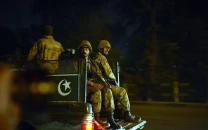
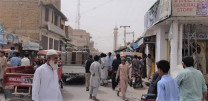
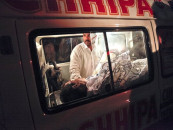
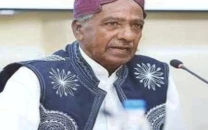












COMMENTS
Comments are moderated and generally will be posted if they are on-topic and not abusive.
For more information, please see our Comments FAQ